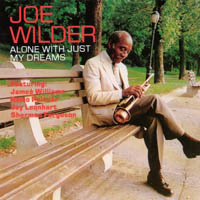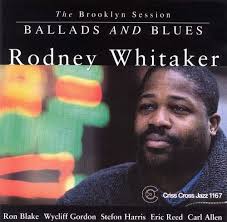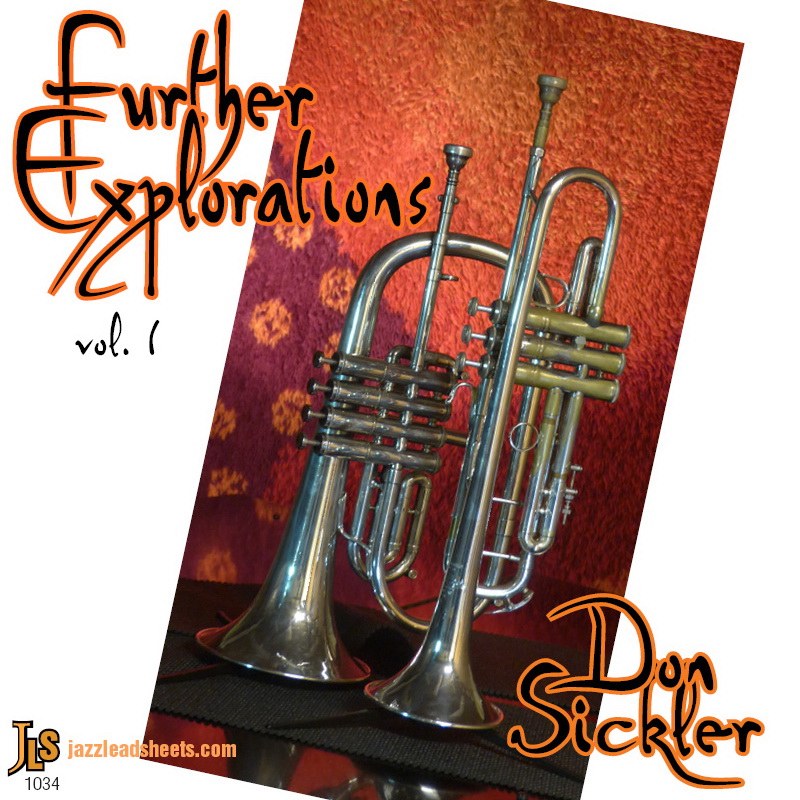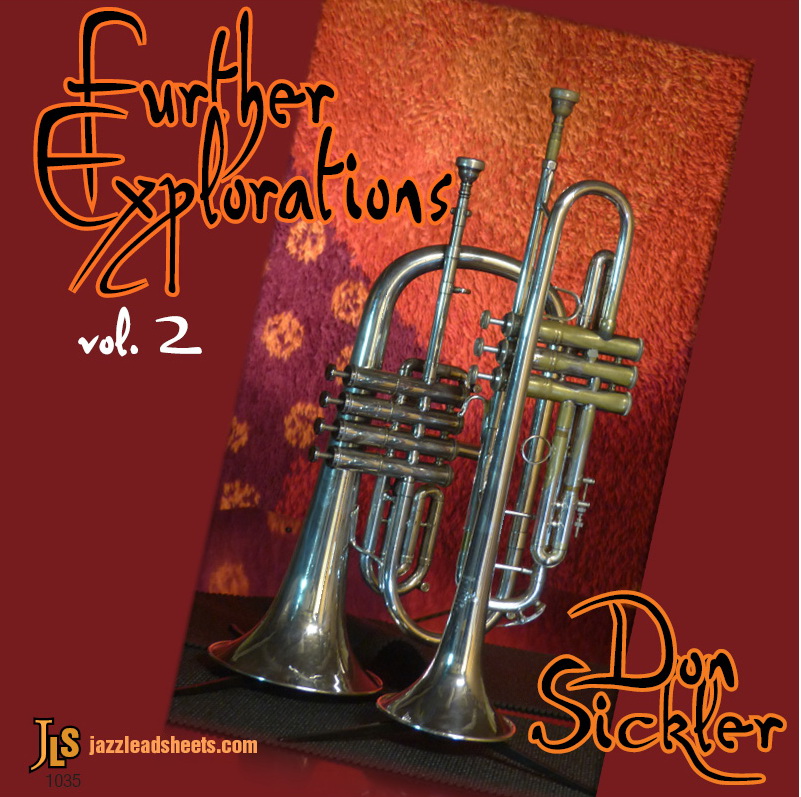Alone With Just My Dreams – George Duvivier
This early bebop-era ballad was not recorded during the composer's lifetime; fortunately he wrote it out! Trumpeter Joe Wilder first recorded it; we have two exclusive recordings available, in two different keys, with Minus You tracks for any melody instrumentalist.
- Recording: Joe Wilder - Alone With Just My Dreams
- Recorded on: August 6 & 7, 1991
- Label: Evening Star (ES-101)
- Concert Key: F
- Vocal Range: , to
- Style: Ballad
- Trumpet - Joe Wilder
- Guitar - Remo Palmieri
- Piano - James Williams
- Bass - Jay Leonhart
- Drums - Sherman Ferguson
0:00
0:00
Buy MP3
Purchase Alone With Just My Dreams - George Duvivier
Purchasing this song through our affiliate links with certain retailers provides jazzleadsheets.com with additional support to help keep us bringing you the best lead sheets available. Thank you!
Video
- Description
- Historical Notes
- Solos
- Piano Corner
- Bass Corner
- Drum Corner
- Guitar Corner
- Inside & Beyond
- Minus You
This ballad was written in the 1940s, and its style is very much the sort of highly developed swing or early bebop of that time. Its melody is elegant and refined, with a lot of the important notes on the upper extensions of the chords, particularly 9ths. The m7♭5 chord features prominently in this song, appearing for example on the second and fourth measures; this chord quality was just being introduced to jazz at that time by such composers as Tadd Dameron. An interesting variant of the "minor II-V7" appears in the sixth measure of this song: the ♭VII dominant (E♭7 in this key of F) leads to the dominant C7. The former chord, with the 9th added, contains Gm7♭5 which would also resolve to C7.
Lead sheets for all instruments are available in this key. Minus You tracks for this song are available in two different keys; click on "Further Explorations, Vol. 1" and "Vol. 2" for more information. Don Sickler lays out the evolution of these four recordings in the Description for "Vol. 1."
Two vocal recordings in different keys (C and B♭) are also available, both with Minus You tracks.
Lead sheets for all instruments are available in this key. Minus You tracks for this song are available in two different keys; click on "Further Explorations, Vol. 1" and "Vol. 2" for more information. Don Sickler lays out the evolution of these four recordings in the Description for "Vol. 1."
Two vocal recordings in different keys (C and B♭) are also available, both with Minus You tracks.
George wrote this ballad, with both music and lyric, when he was a young man. We first discovered it in George's biography, "Bassically Speaking." Historian Ed Berger of the Rutgers Institute of Jazz Studies spent many hours with George, getting details of his life and career.
Alone With Just My Dreams was not recorded during George Duvivier's lifetime. Wilder played some of Duvivier's arrangements in the Jimmie Lunceford band in the '40s. The two first recorded together with Lena Horne in 1955 and appear together on a wide variety of recordings over the following 30 years. Duvivier played on Wilder's debut album as a leader, "Of Thee I Sing," from 1956.
Alone With Just My Dreams was not recorded during George Duvivier's lifetime. Wilder played some of Duvivier's arrangements in the Jimmie Lunceford band in the '40s. The two first recorded together with Lena Horne in 1955 and appear together on a wide variety of recordings over the following 30 years. Duvivier played on Wilder's debut album as a leader, "Of Thee I Sing," from 1956.
Related Songs
Email Send Alone With Just My Dreams to a friend
Send this page to a friend via email. Add your name or email in the first field. In the second, add one or more email addresses, separated by a comma.
- Recording: Rodney Whitaker - Ballads And Blues: The Brooklyn Session
- Recorded on: December 13, 1998
- Label: Criss Cross Jazz (1167)
- Concert Key: F
- Vocal Range: , to
- Style: Ballad
- Tenor Sax - Ron Blake
- Trombone - Wycliffe Gordon
- Vibes - Stefon Harris
- Piano - Eric Reed
- Bass - Rodney Whitaker
- Drums - Carl Allen
0:00
0:00
Buy MP3
Video
- Description
- Historical Notes
- Solos
- Piano Corner
- Bass Corner
- Drum Corner
- Guitar Corner
- Inside & Beyond
- Minus You
Bassist Rodney Whitaker was intrigued by Duvivier's ballad and included it in his "Ballads And Blues" album.
The rhythm section of Reed, Whitaker and Allen recorded together a few months after this album, in a tribute album to the great tenor saxophonist Joe Henderson.
Related Songs
Email Send Alone With Just My Dreams to a friend
Send this page to a friend via email. Add your name or email in the first field. In the second, add one or more email addresses, separated by a comma.
- Recording: Don Sickler - Further Explorations Vol. 1
- Recorded on: May 24, 2003
- Label: jazzleadsheets.com (JLS 1034)
- Concert Key: C
- Vocal Range: , to
- Style: Ballad
- Flugelhorn or Muted Trumpet - Don Sickler
- Piano - Cecilia Coleman
- Bass - Tim Givens
Video
- Description
- Historical Notes
- Solos
- Piano Corner
- Bass Corner
- Drum Corner
- Guitar Corner
- Inside & Beyond
- Minus You
Don Sickler: Although the maximum tempo variation of these four recordings is only 11 beats a minute, the four variations in tempo really change the flow of the ballad. Joe Wilder (trumpet) was the first to record this ballad, and he chose what what I call a medium ballad tempo (ca. 62). This gives the melody a nice flow, and Joe's performance is beautiful (first album cover on the left).
Bassist Rodney Whitaker's tempo is a little faster (ca. 69), a good walking ballad tempo. The first and last A sections of the melody are played in octaves by vibes and tenor sax so the melody is played pretty much as George wrote it. The second A of the melody is tenor sax, and the bridge is vibes, and each musician interprets the melody in their own way.
Once you lower the tempo of this ballad into the 50 beat per minute area, it's in the slow ballad range. I love to play slow ballads, and I often prefer them without drums, so these two tempos of ca. 58 and ca. 54 were great for me. The keys are also lower, in what I call female friendly keys for singers.
On "Vol. 1" (at ca. 58), I first recorded on flugelhorn. This fourth lower key puts it in a great flugelhorn range. I then recorded it an octave higher, on trumpet with harmon mute, which gave me a whole new way to think about the song.
On "Vol. 2" (at ca. 54), pianist Cecilia Coleman played a beautiful rubato solo piano intro to get me into the mood. The slower the tempo, the more space you have between notes and phrases, so you can really take your time expressing the melody. This track is a chorus and a half, so I got to go back to bridge and solo until the last A section out melody.
"Vol. 2" was recorded at a different time than Vol 1, but after doing a flugelhorn take, I got my trumpet and harmon mute out again and recorded a take up an octave.
Ballad playing is very demanding. You've got to just pour out your heart. After one take, usually that's it, you're emotionally spent. Of course, if you do something like change instruments, your mindset might be ready for another look.
Here's a clip of my muted trumpet version: CLIP
Bassist Rodney Whitaker's tempo is a little faster (ca. 69), a good walking ballad tempo. The first and last A sections of the melody are played in octaves by vibes and tenor sax so the melody is played pretty much as George wrote it. The second A of the melody is tenor sax, and the bridge is vibes, and each musician interprets the melody in their own way.
Once you lower the tempo of this ballad into the 50 beat per minute area, it's in the slow ballad range. I love to play slow ballads, and I often prefer them without drums, so these two tempos of ca. 58 and ca. 54 were great for me. The keys are also lower, in what I call female friendly keys for singers.
On "Vol. 1" (at ca. 58), I first recorded on flugelhorn. This fourth lower key puts it in a great flugelhorn range. I then recorded it an octave higher, on trumpet with harmon mute, which gave me a whole new way to think about the song.
On "Vol. 2" (at ca. 54), pianist Cecilia Coleman played a beautiful rubato solo piano intro to get me into the mood. The slower the tempo, the more space you have between notes and phrases, so you can really take your time expressing the melody. This track is a chorus and a half, so I got to go back to bridge and solo until the last A section out melody.
"Vol. 2" was recorded at a different time than Vol 1, but after doing a flugelhorn take, I got my trumpet and harmon mute out again and recorded a take up an octave.
Ballad playing is very demanding. You've got to just pour out your heart. After one take, usually that's it, you're emotionally spent. Of course, if you do something like change instruments, your mindset might be ready for another look.
Here's a clip of my muted trumpet version: CLIP
"Further Explorations" was recorded at the legendary Van Gelder Studio in Englewood Cliffs.
Although the rhythm section will play exactly the same every time you play along with the Minus You track, that doesn't mean you have to play the same. Let them inspire you to experiment.
The basic tracks were recorded by Rudy Van Gelder at his studio in 2003, but I added my trumpet and flugelhorn melodies/improvisations in 2017. Still at Rudy's studio, but with my wife Maureen as engineer.
Although the rhythm section will play exactly the same every time you play along with the Minus You track, that doesn't mean you have to play the same. Let them inspire you to experiment.
The basic tracks were recorded by Rudy Van Gelder at his studio in 2003, but I added my trumpet and flugelhorn melodies/improvisations in 2017. Still at Rudy's studio, but with my wife Maureen as engineer.
Exclusive Audio track CLIP no melody
The Minus Melody track is one chorus long. Though the lead sheet has a first and second ending, only the second is used on the recording. The one-measure piano intro cues in the melody. Because the first and second A section have mostly the same melody, a soloist can improvise on the second A section instead of playing both A section melodies.
The Minus Melody track is one chorus long. Though the lead sheet has a first and second ending, only the second is used on the recording. The one-measure piano intro cues in the melody. Because the first and second A section have mostly the same melody, a soloist can improvise on the second A section instead of playing both A section melodies.
Related Songs
Email Send Alone With Just My Dreams to a friend
Send this page to a friend via email. Add your name or email in the first field. In the second, add one or more email addresses, separated by a comma.
- Recording: Don Sickler - Further Explorations Vol. 2
- Recorded on: October 23, 2004
- Label: jazzleadsheets.com (JLS 1035)
- Concert Key: B-flat
- Vocal Range: , to
- Style: Ballad
- Flugelhorn or Muted Trumpet - Don Sickler
- Piano - Cecilia Coleman
- Bass - Tim Givens
- Drums - Vince Cherico
Video
- Description
- Historical Notes
- Solos
- Piano Corner
- Bass Corner
- Drum Corner
- Guitar Corner
- Inside & Beyond
- Minus You
This version in B♭ concert comes from Rachel Gould's vocal recording. It is a chorus and a half long; the first ending goes back to the B section. If you are playing this without the Minus You track you can also go back to the A section instead. The four-measure piano intro is also shown in the lead sheet.
The melody clip on flugelhorn is above. Here's Don on muted trumpet:
CLIP muted trumpet
Although Don chose to mix his versions without drums, you can get a Minus You track with drums.
The melody clip on flugelhorn is above. Here's Don on muted trumpet:
CLIP muted trumpet
Although Don chose to mix his versions without drums, you can get a Minus You track with drums.
"Further Explorations Vol.2" was recorded at the legendary Van Gelder Studio in Englewood Cliffs.
Don Sickler, surrounded by audio tracks recorded by the famed engineer Rudy Van Gelder, and featuring the sensitive, elegant accompaniment of pianist Cecilia Coleman, couldn't resist the temptation to add his instrumental voice to the mix . . .
Once he played with the track on flugelhorn, he had to try it on muted trumpet.
Don Sickler, surrounded by audio tracks recorded by the famed engineer Rudy Van Gelder, and featuring the sensitive, elegant accompaniment of pianist Cecilia Coleman, couldn't resist the temptation to add his instrumental voice to the mix . . .
Once he played with the track on flugelhorn, he had to try it on muted trumpet.
Exclusive Minus You audio track
clip Piano and Bass accompaniment
clip Piano, Bass and Drums accompaniment (Drums enter after the introduction)
Our Minus Melody track is a chorus and a half long. After the first ending, it goes back to B for the out melody; a soloist can also improvise this second B section and play the out melody from C. The four-measure piano intro cues in the melody.
clip Piano and Bass accompaniment
clip Piano, Bass and Drums accompaniment (Drums enter after the introduction)
Our Minus Melody track is a chorus and a half long. After the first ending, it goes back to B for the out melody; a soloist can also improvise this second B section and play the out melody from C. The four-measure piano intro cues in the melody.
Related Songs
Email Send Alone With Just My Dreams to a friend
Send this page to a friend via email. Add your name or email in the first field. In the second, add one or more email addresses, separated by a comma.
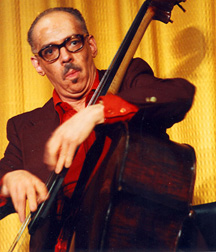
George Duvivier
August 17, 1920 – July 11, 1985
August 17th is the 105th anniversary of the birth of George Duvivier, one of the most in-demand bass players of all time! Read more...
There was a problem.
...

